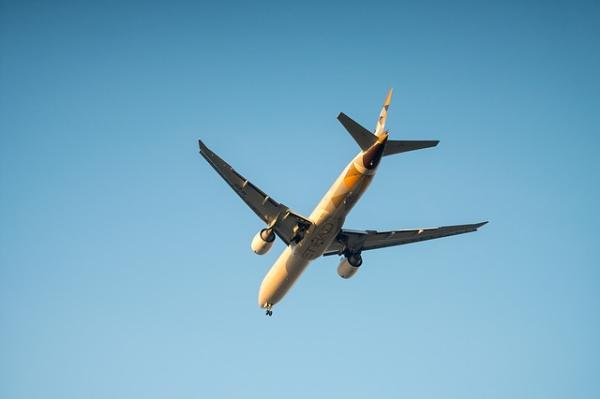Flight attendants have roughly five times the exposure to radiation, in this case, cosmic radiation, then workers at nuclear energy plants. [1] A study in Environmental Health looked at the subsequent cancer risk for flight attendants – and spoiler alert, the results are mixed.
Where is the source of the radiation?
Cosmic rays refer to radiation from the sun and outside our galaxy. They are the primary source of radiation from air travel. But before you worry, consider a bit more information. Cosmic rays have been present forever, and their intensity is stable, at least over the last few million years. As these particles enter our atmosphere, they collide with other atoms (from nitrogen, oxygen and carbon dioxide) creating even more particles, a process that continues until reaching a maximum about 12 miles above sea level. As the atmosphere gets thicker, the intensity of the cosmic radiation decreases, a process termed atmospheric shielding. For the typical commercial airliner, flying at 35,000 feet the radiation exposure is 0.003 millisieverts (mSv) [2] per hour.
Solar Flares
A less consistent, unpredictable source of cosmic radiation, is the solar wind, a term for the stream of particles our sun emits. Most of this radiation is deflected by the Earth’s magnetic field and are of no consequence, but occasional the sun releases a sudden burst of energy described as a solar flare. Some of this radiation can effectively enter our atmosphere and contributes to our in-flight exposure. And while these flares occur almost monthly, on average, only one a year, affects radiation levels at aviation altitudes. So again, while this is not an issue for the occasional traveler, it may be for the flight crews – it is estimated that a pilot encounters six such flares during their career.
The Study
The researchers used Harvard’s Flight Attendant Health Survey, comparing self-reported cancers and work exposure of 5366 attendants to controls taken from the National Health and Nutrition Examination Survey. They reported an increased incidence of breast cancer (1.5 fold), melanoma (2.27 fold) and non-melanoma skin cancers (4.09 fold). The findings were consistent with previous studies done in the US and Europe.
Perhaps the most significant limitation of the study was the mismatch between attendants and controls. The control population was younger, had more smokers and more children – so the researchers concluded that these differences would cause the radiation effect on attendants to be underestimated. Also, the self-reported cancers had no indication when they occurred so that drawing meaningful conclusions about the association between flying and cancer risk, is problematic. The exposure to radiation was also not known. Instead the length of attendant’s employment by was the surrogate for occupational exposure, and no other exposures such as sunbathing were included.
While it is difficult to actually measure the amount of cosmic radiation any flight is exposed to, the generalization is that cosmic radiation exposure is greater on longer flights, at higher altitudes and those nearer the poles; flight crews minimize their risks by flying various other routes, at least part of the time. The additional increased exposure due to solar flares remains unpredictable.
We do not know whether there is a “safe” level of cosmic radiation. Experts have suggested that a transcontinental flight would increase your risk of cancer by 0.02%, virtually a rounding error [3] But flight crews spend a lot more time in the air than we do, and their total exposure is higher. But even at their greater exposure, the cancer risk is calculated to be about a half percentage point higher than the general non-flying population. If you look at the actual numbers in the study, except for non-melanoma skin cancers, this estimate is in line with the research findings – but again we are comparing various estimates, not actual numbers.
The study did not address pregnancy directly, but the current guidelines indicate that a pregnant woman should not be exposed to more than one mSv during her pregnancy, although other guidelines suggest 0.5mSv monthly. This is equivalent to flying about 340 hours a year by the 1mSv standard or 166 hours a month by the 0.5mSv standard. So for the occasional pregnant traveler, this is not an issue.
[1] 3.07mSv vs. 0.59mSv for DOE workers.
[2] mSv stands for milli-Sievert and is a measure of ionizing radiation.
[3] On a flight of five hours the total exposure of 0.003 mSv/hr results in a total of 0.045 mSv, estimated cancer risk increases 0.005%/mSv, so the increased risk is 0.02%. Maybe California’s Proposition 65 should take a look at labeling air flight as a cancer risk – just kidding.
Source: Cancer prevalence among flight attendants compared to the general population Environmental Health DOI: 10.1186/s12940-018-0396-8
Additional information found at: Air travel exposes you to radiation – how much health risk comes with it?, CDC report on Cosmic Ionizing Radiation, Evaluation of the Cosmic Radiation Exposure of Aircraft Crew




